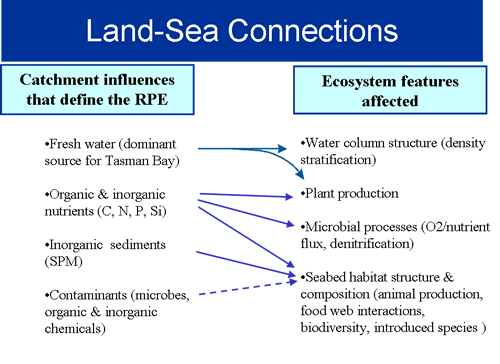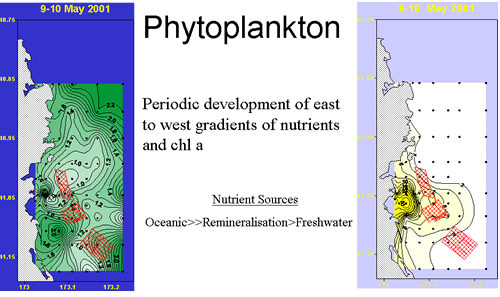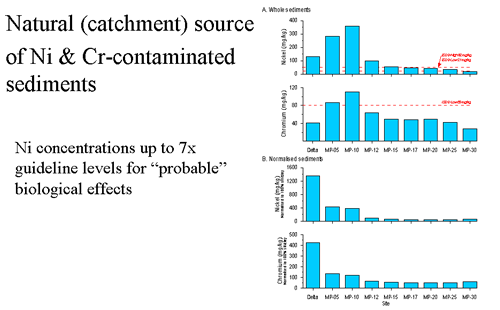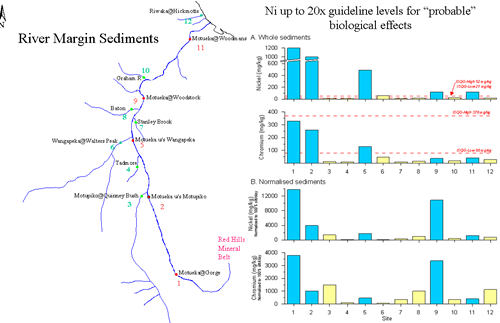RPE - more details
River plume ecosystem (RPE) concept for management of coastal environments requires an ICM framework linking terrestrial, freshwater and coastal-sea processes. We call it the ridge-top-to-the-sea approach.
A subtle change in thinking is first required where the coastal region significantly affected by a river outwelling plume is considered an integral part of the catchment. Thus fishing, aquaculture and other activities taking place in the coastal zone can be considered catchment “land” uses.
The challenge is to ensure that this relationship remains healthy in the face of changing catchment land use practices and the increasing demands of coastal resource uses. In the case of the Nelson Bays we are seeing changes in coastal resource uses (e.g. aquaculture development) that place increased bottom-up demands on catchment management.

Although freshwater delivery contributes a small proportion of the total nutrient pool of Tasman Bay, concentration gradients (chl a on the left figure below, and DRSi on the right) periodically develop within the plume affected region.

Strong signals of terrestrial influence were observed at depths of 5 and 10 m along the plume transect.

Metals-contaminated sediments were discovered within the river plume depositional zone.

Good Friday flood (March 2005) centred in the upper Motueka catchment. One in 50 year event. Sampling and analyses of river margin sediments trace the source of metals contamination to the upper Motueka Red Hills mineral belt region.

Contact: Paul Gillespie